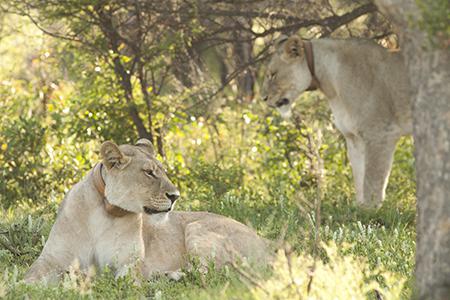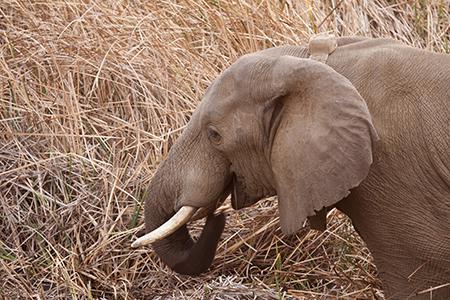Sze-Wing Yiu
Our project aims to develop a model to illustrate the effect of reintroductions on the interactions between species and the environment to suggest appropriate management practices for the Dinokeng Management Association, so as to establish a viable population of reintroduced animals without adversely influencing the existing ecosystem.

Reintroduced lionesses tagged with satellite collars.
Insufficient post-release monitoring and uninformed management decisions are frequently the biggest threats to wildlife reintroduction projects. Reintroducing large predators and mega-herbivores can cause cascade effects on the environment and should be monitored to detect and prevent potential adverse effects on ecosystems. Predators are known to regulate prey population through direct predation and indirectly through a “landscape of fear” that affect prey behaviour and space use, and consequently their fitness; ultimately cascading into vegetation structure and composition changes. Mega-herbivores, like elephants, impact biodiversity at various levels (“intermediate disturbance hypothesis”), including structural changes in vegetation and microhabitats that leads to changes in species diversity and community composition.

Reintroduced elephants tagged with satellite collars.
Understanding and applying these concepts is essential to formulate informed management decisions. Testing these concepts in a hypotheses driven research is instrumental in understanding the effects of wildlife reintroduction on ecosystems and to provide valuable insights into wildlife dynamics and broader ecological implications. Dinokeng Game Reserve (DGR) is a newly established South African nature reserve where several landowners dropped their fences and incorporated their privately owned land into a larger conservancy area facilitating wildlife reintroduction and ecosystem restoration. The objectives of our project in DGR are to:
1. undertake a baseline ecological study that documents the space use of reintroduced lions, cheetahs and elephants and the effect of their reintroduction on the vigilance behaviour and space use of wildebeest and zebra;
2. investigate the effect of elephants reintroduction on the diversity and community structure of bats as biodiversity indicators;
3. create a predictive landscape of fear and reintroduction impact map using the information collected.
Using the information collected, we aim to inform Dinokeng Management Association on post-release monitoring and future reintroduction using the predictive maps and to raise conservation awareness by giving talks to different people groups in Dinokeng.